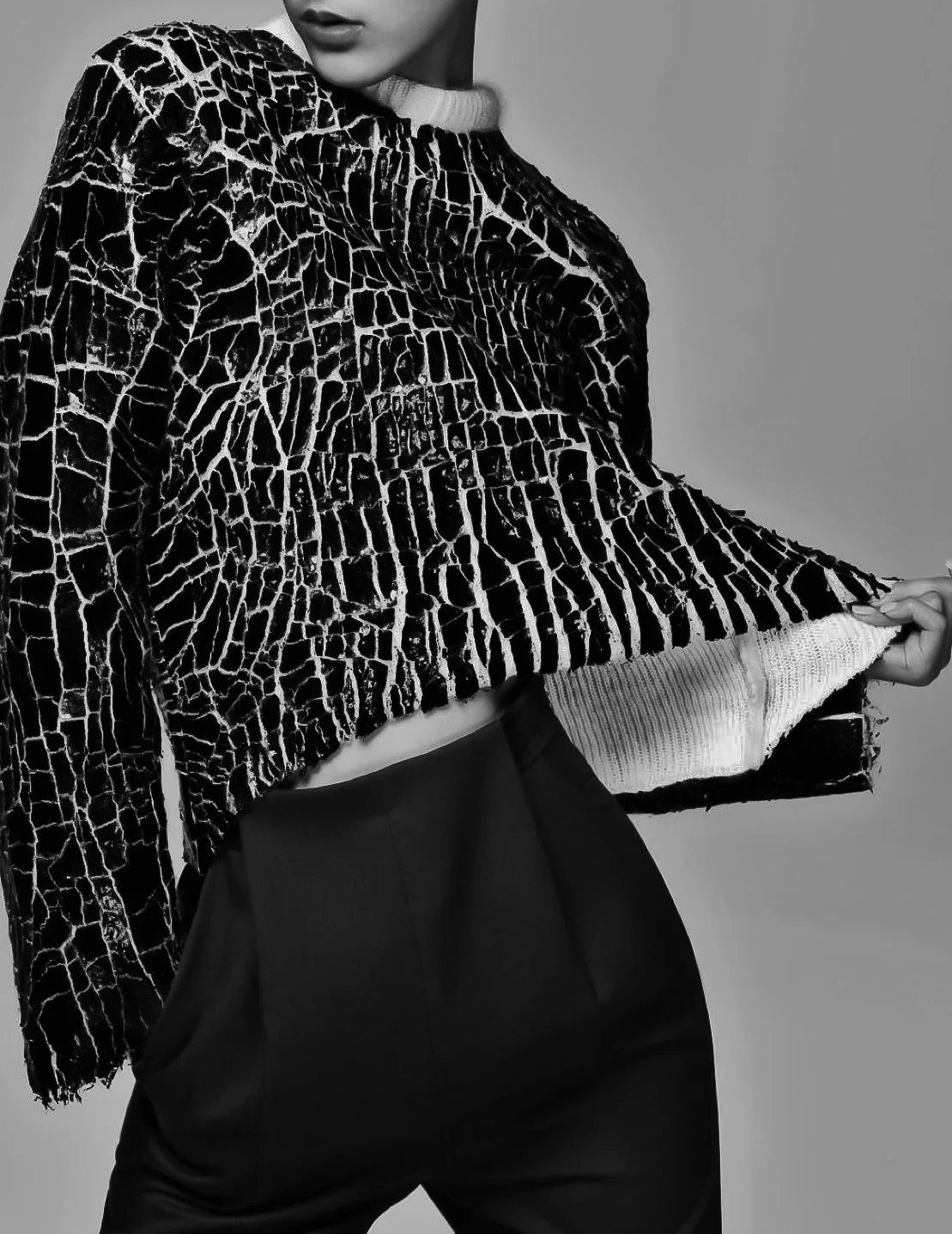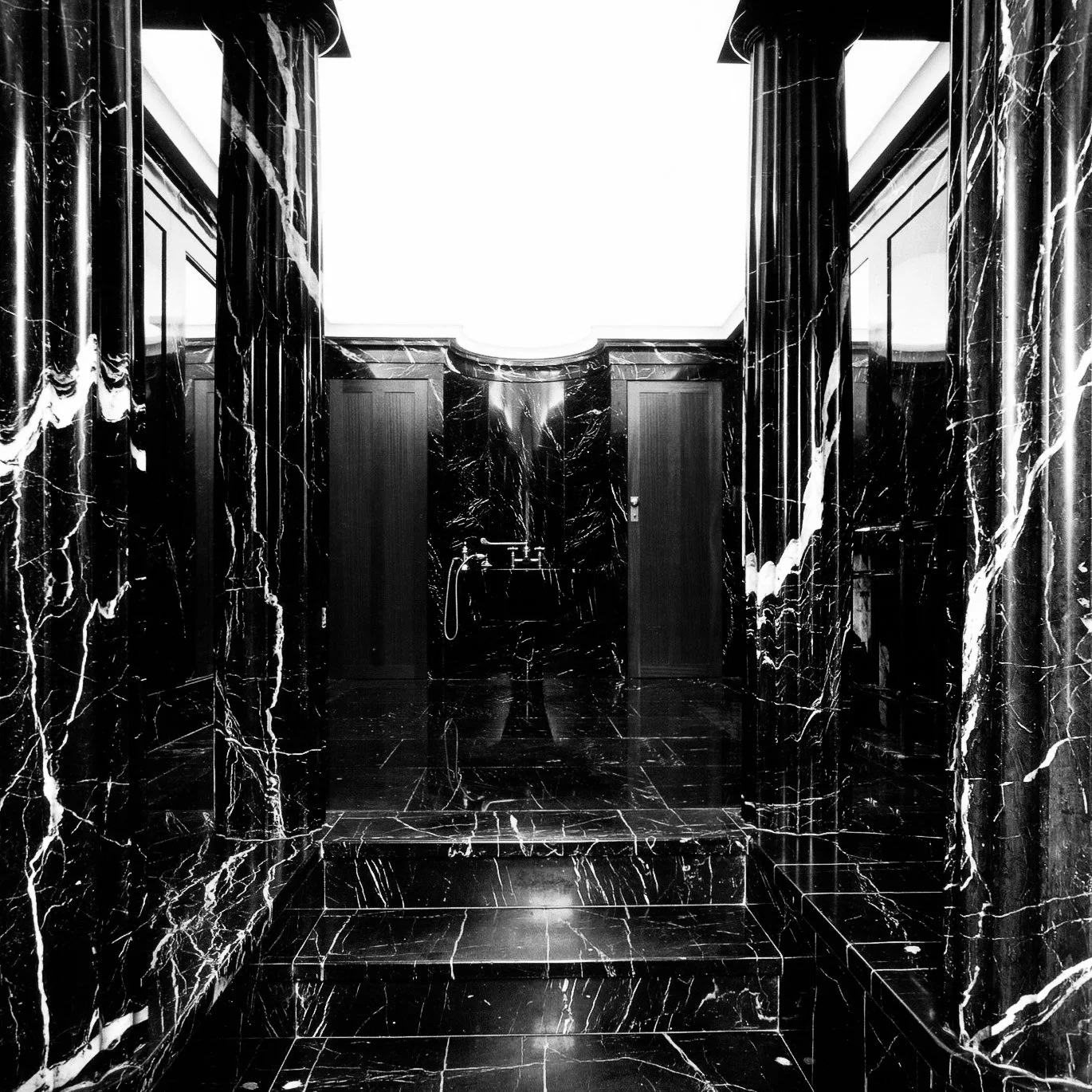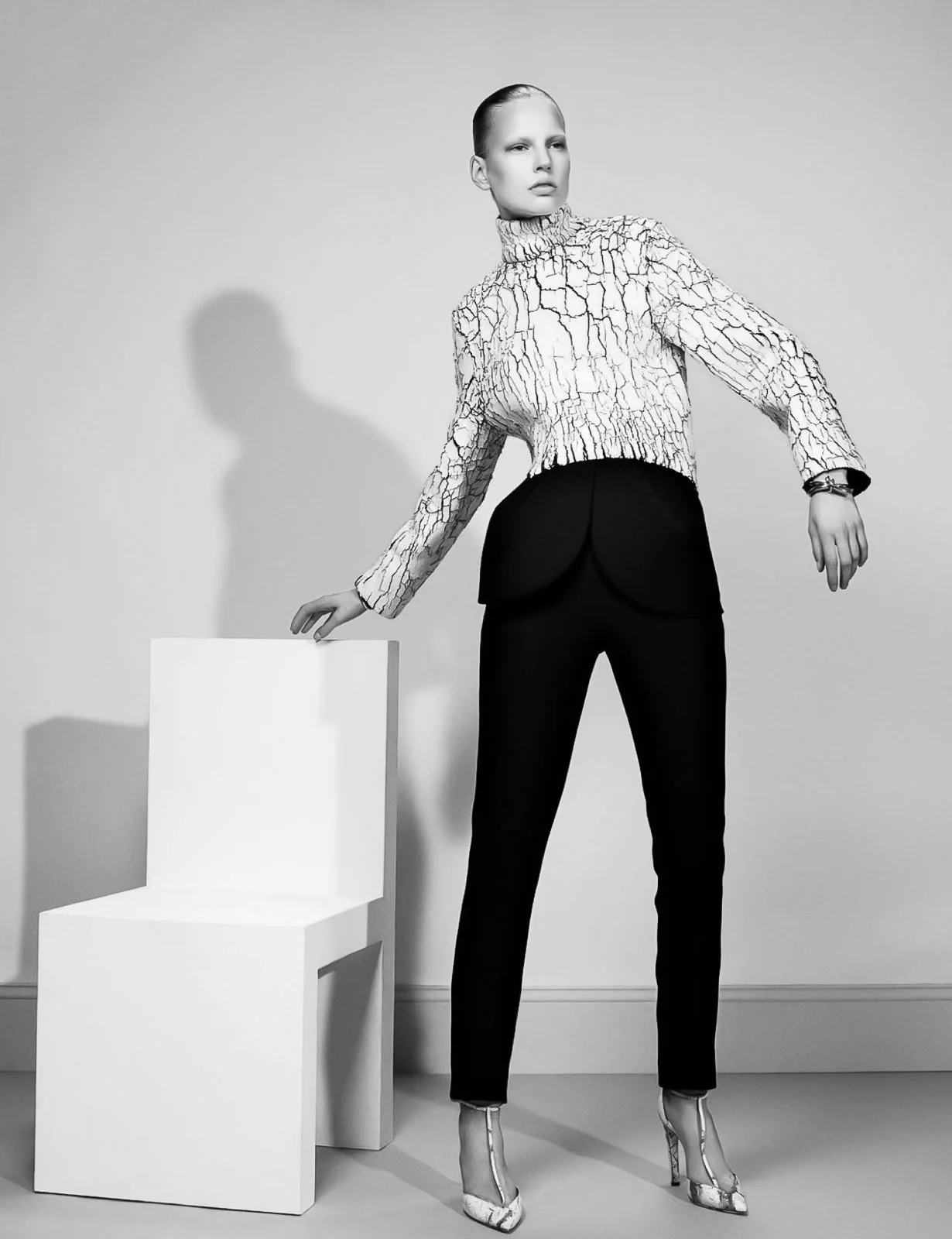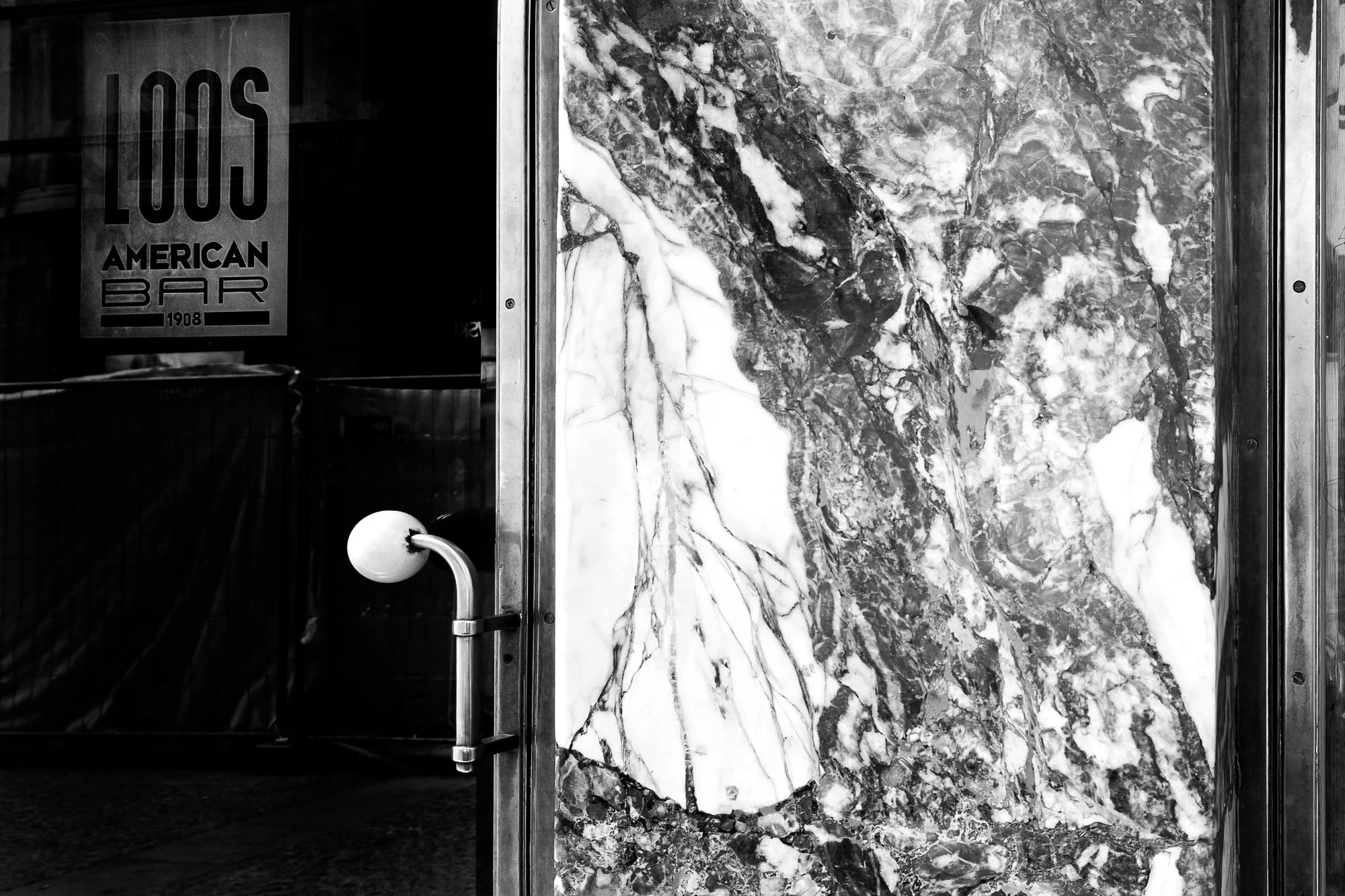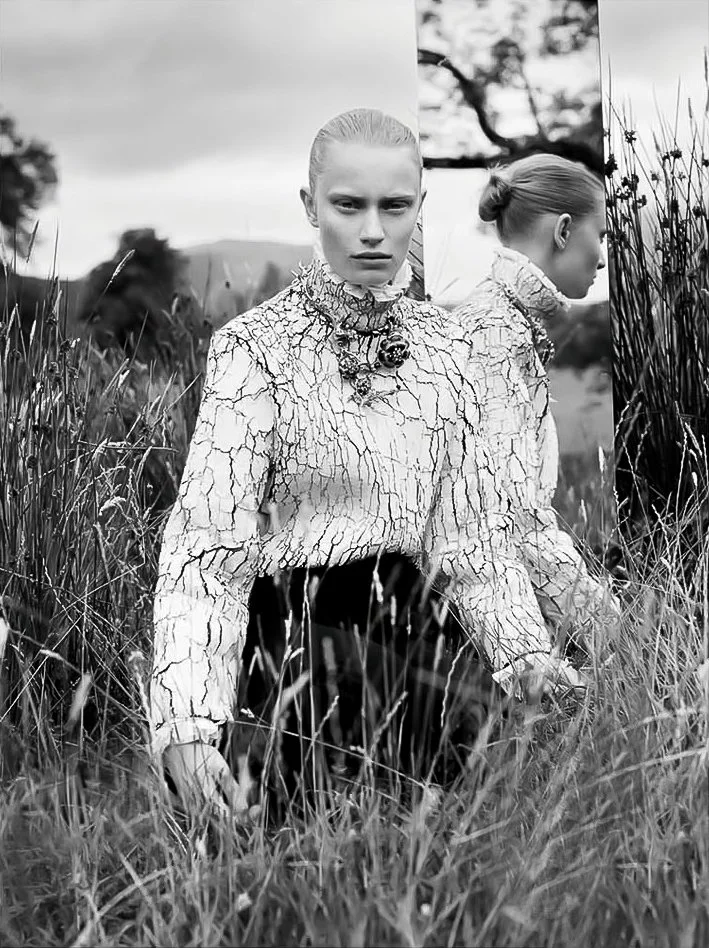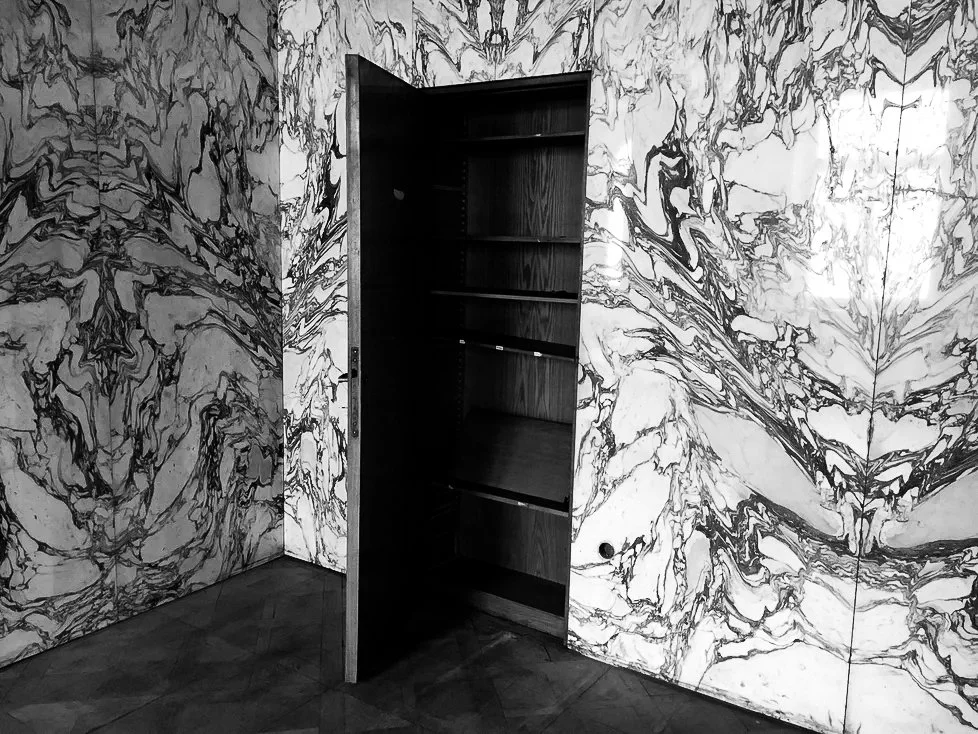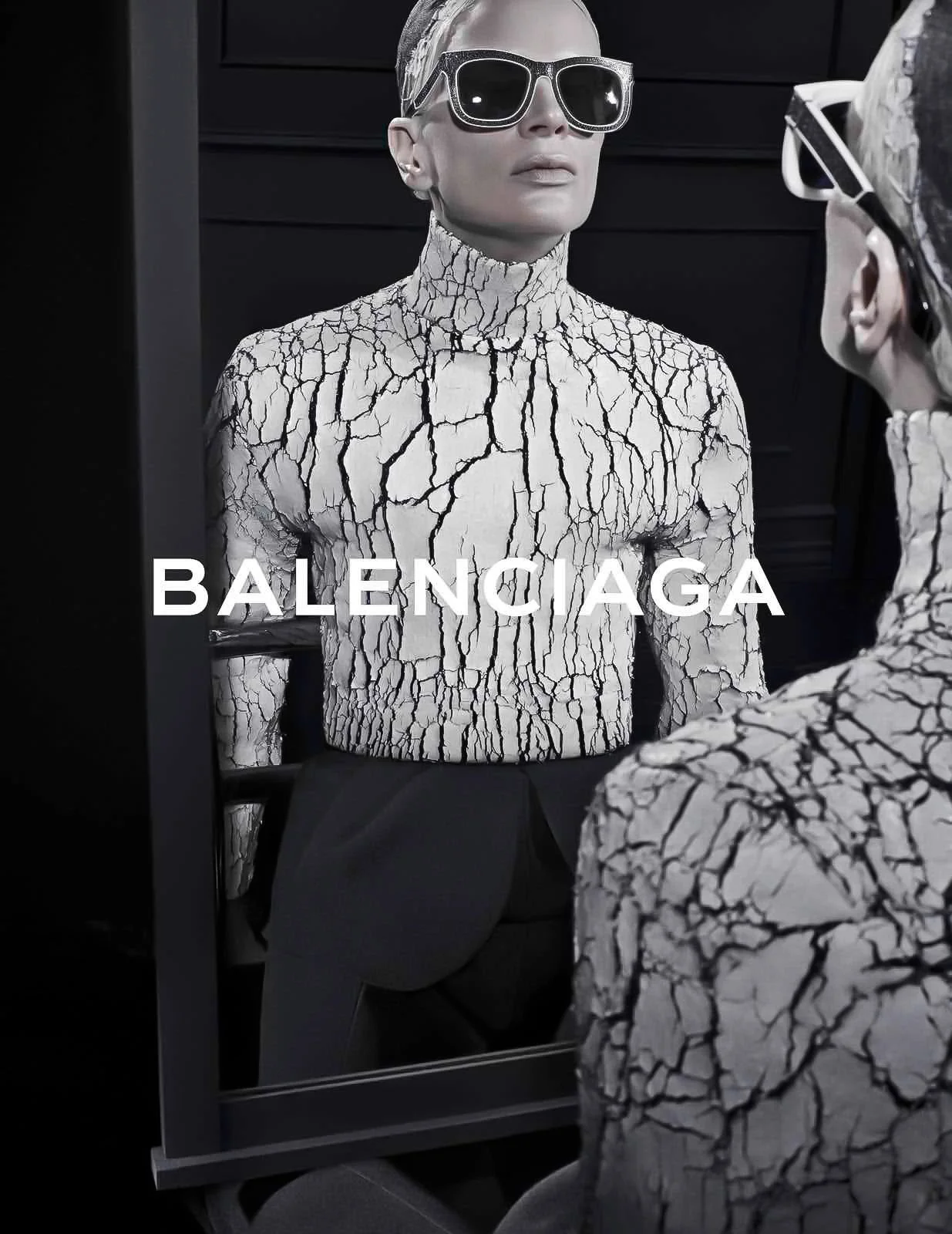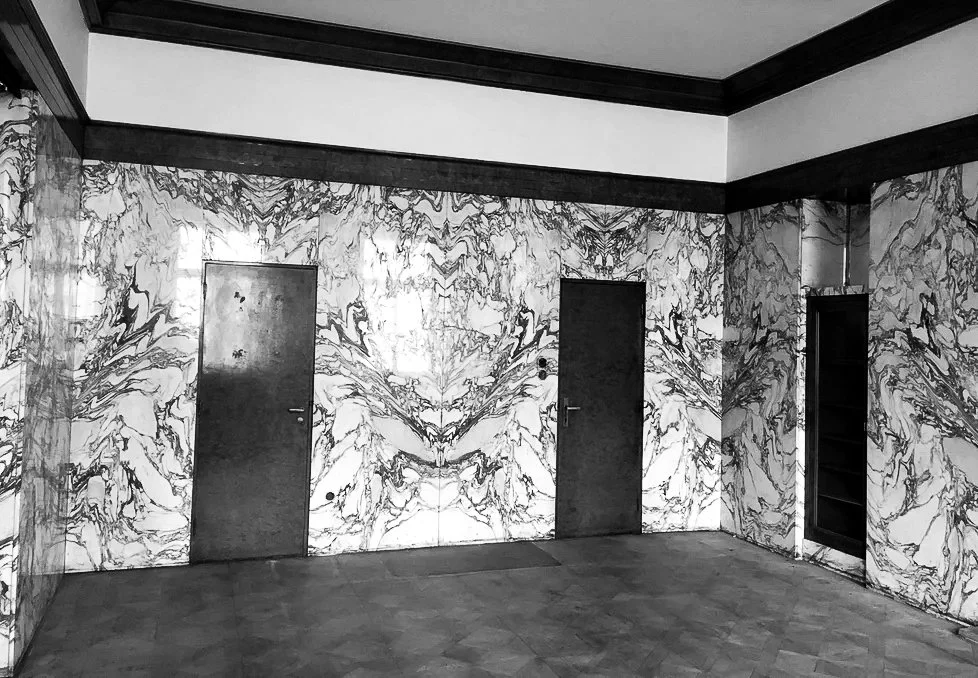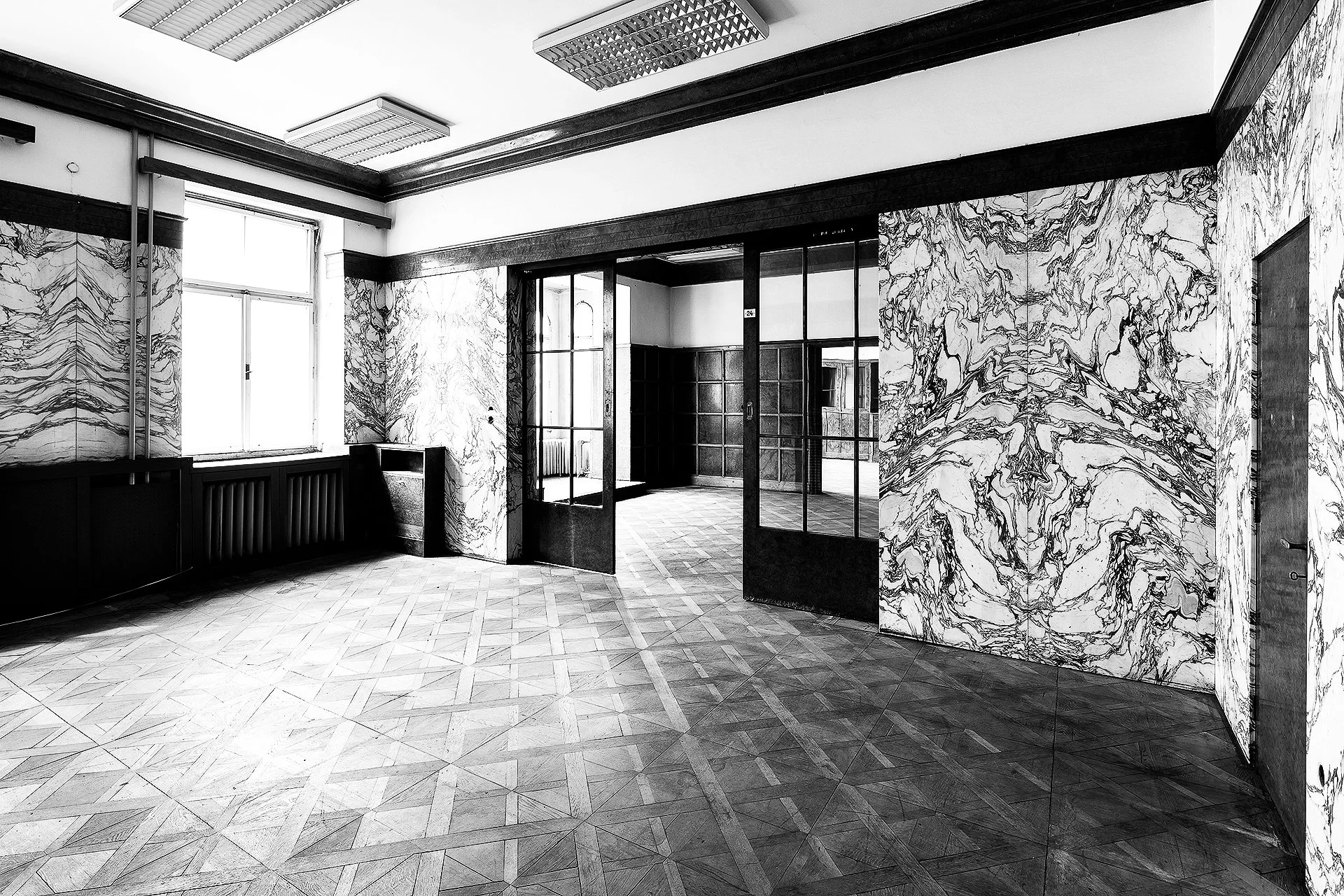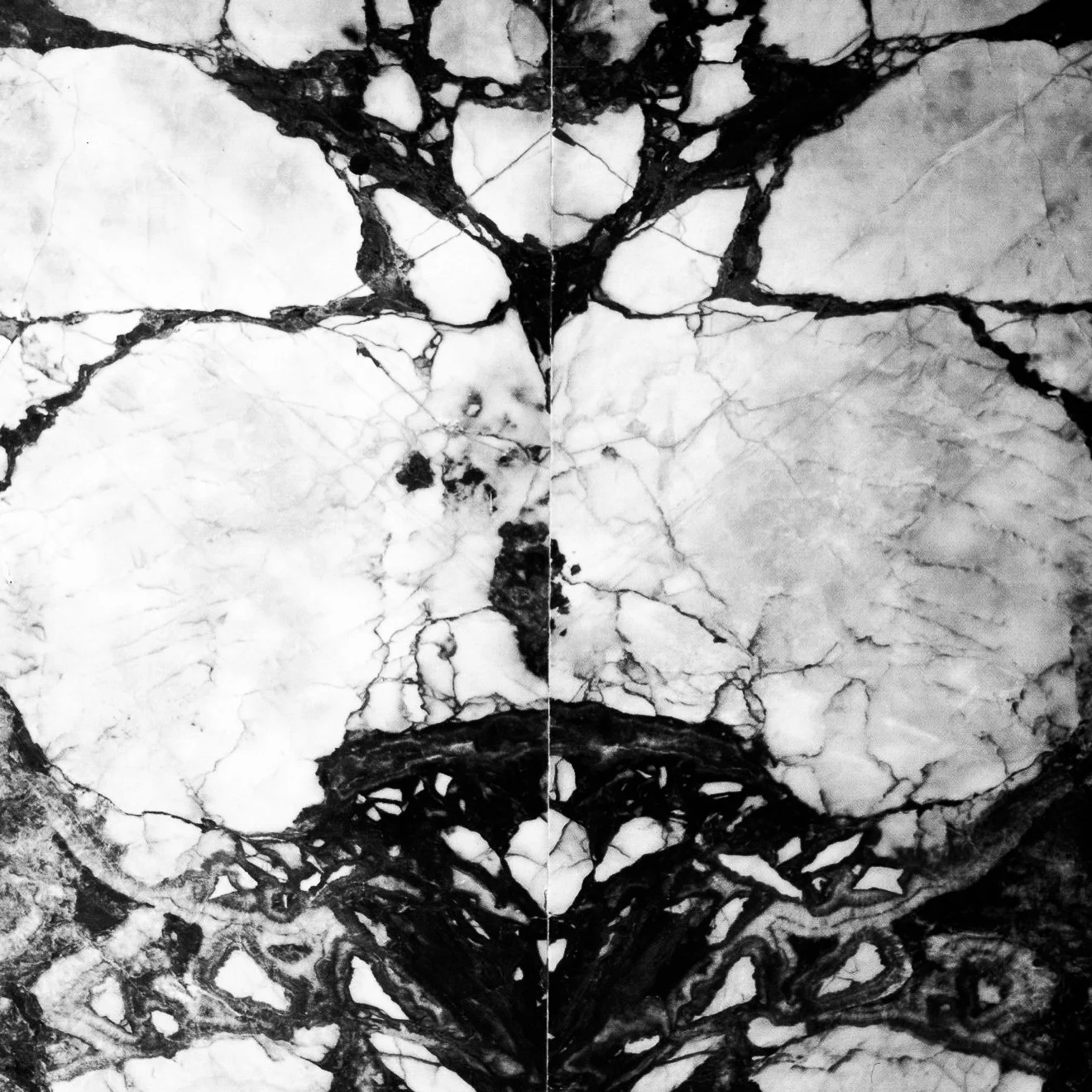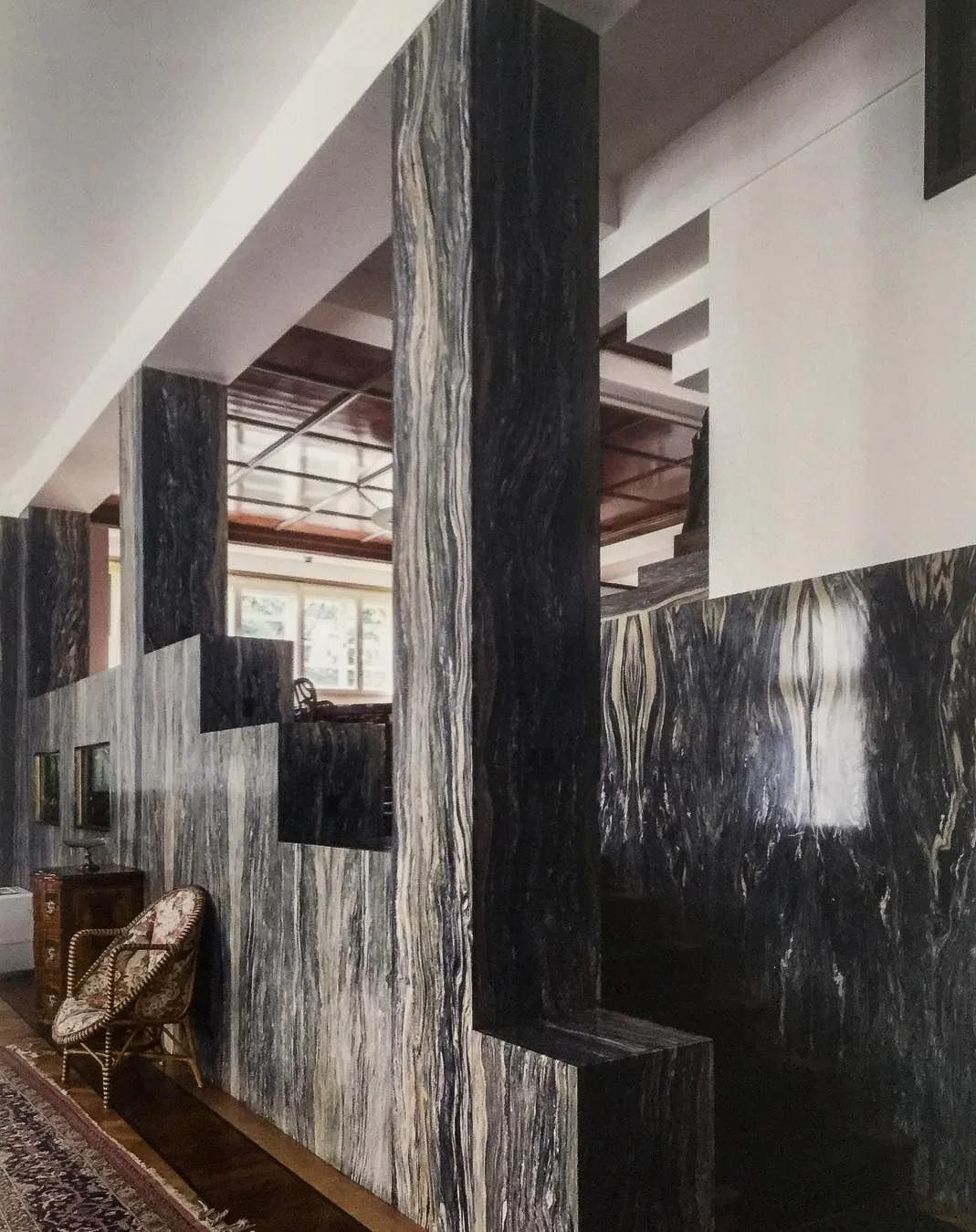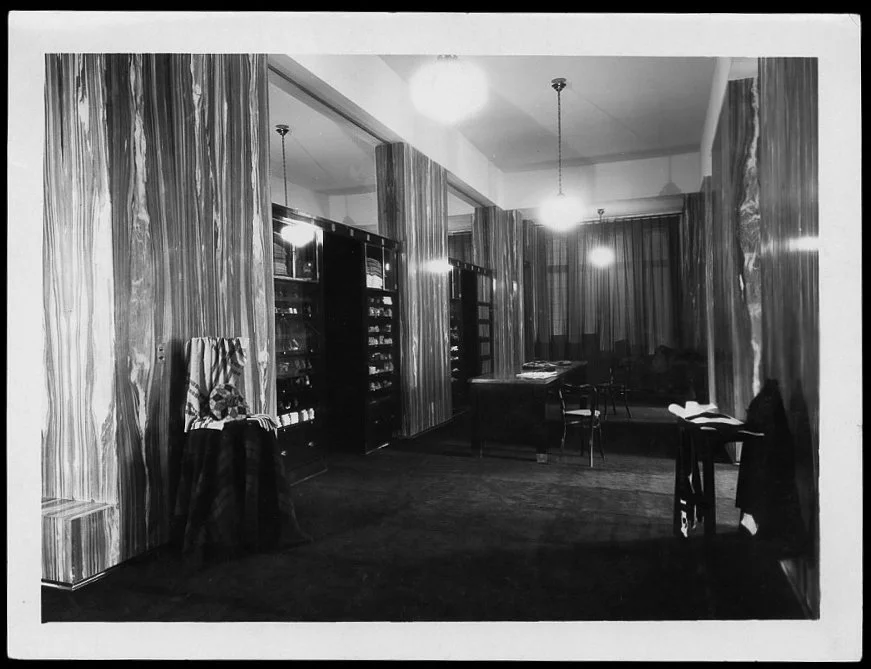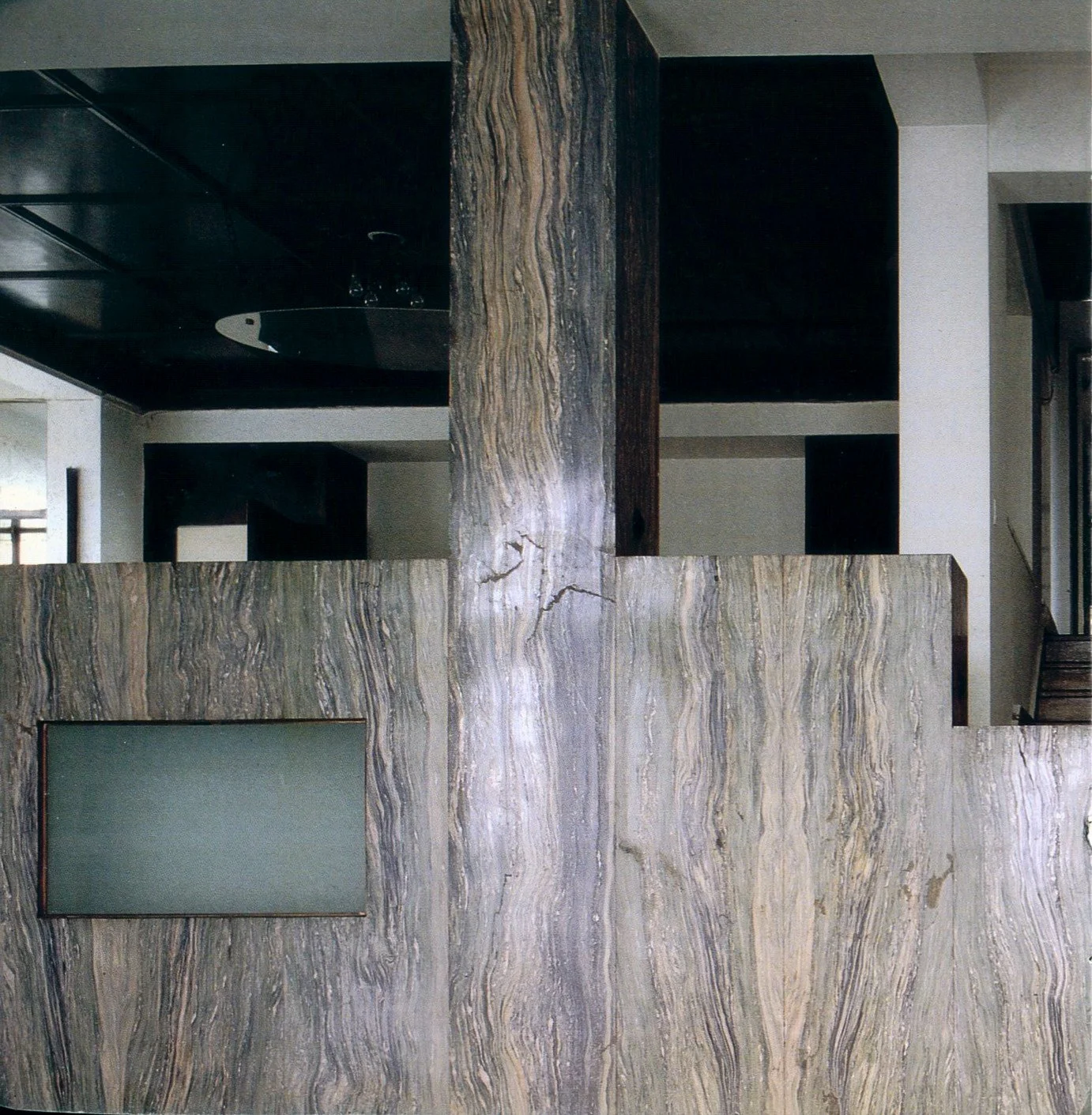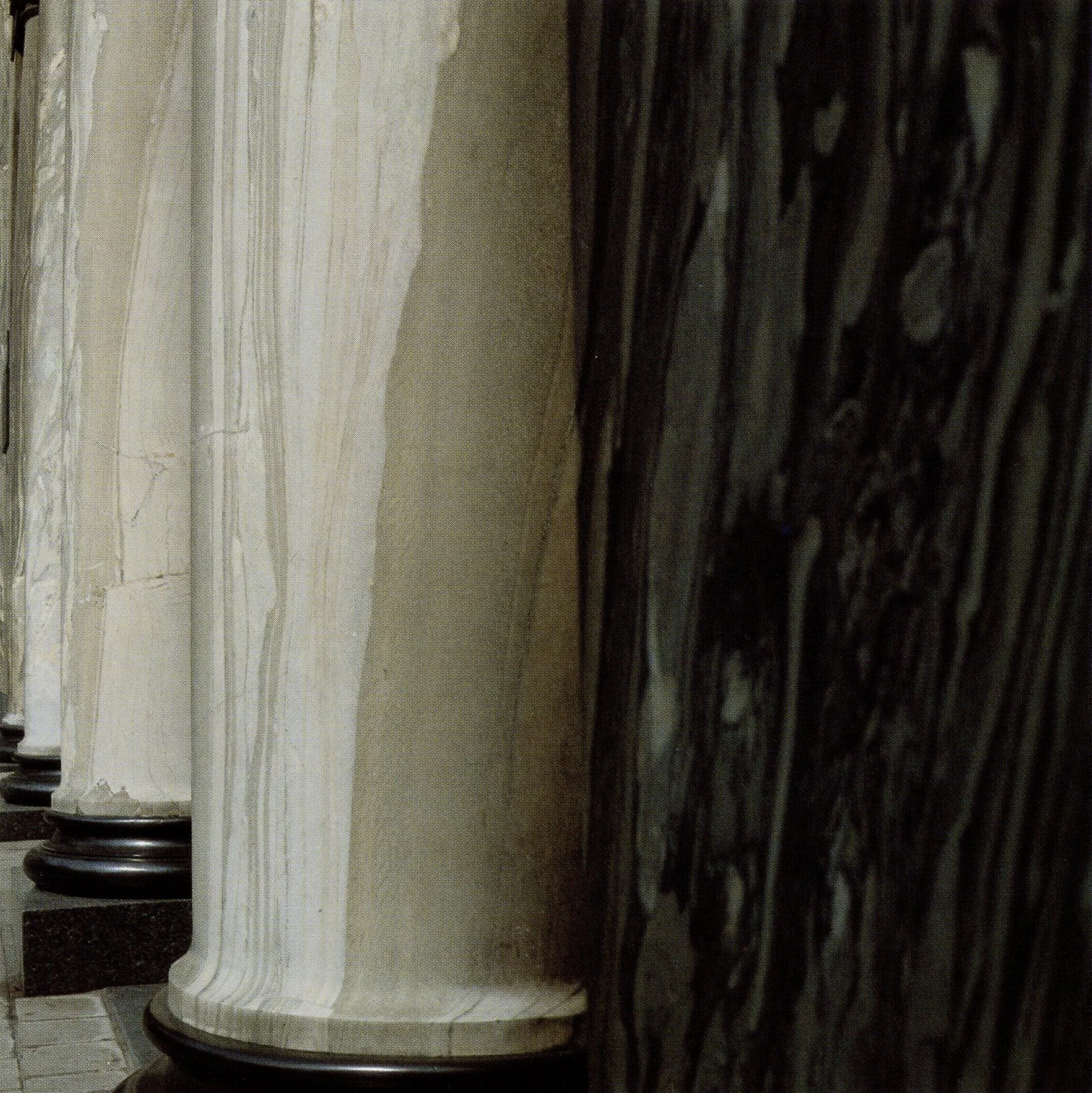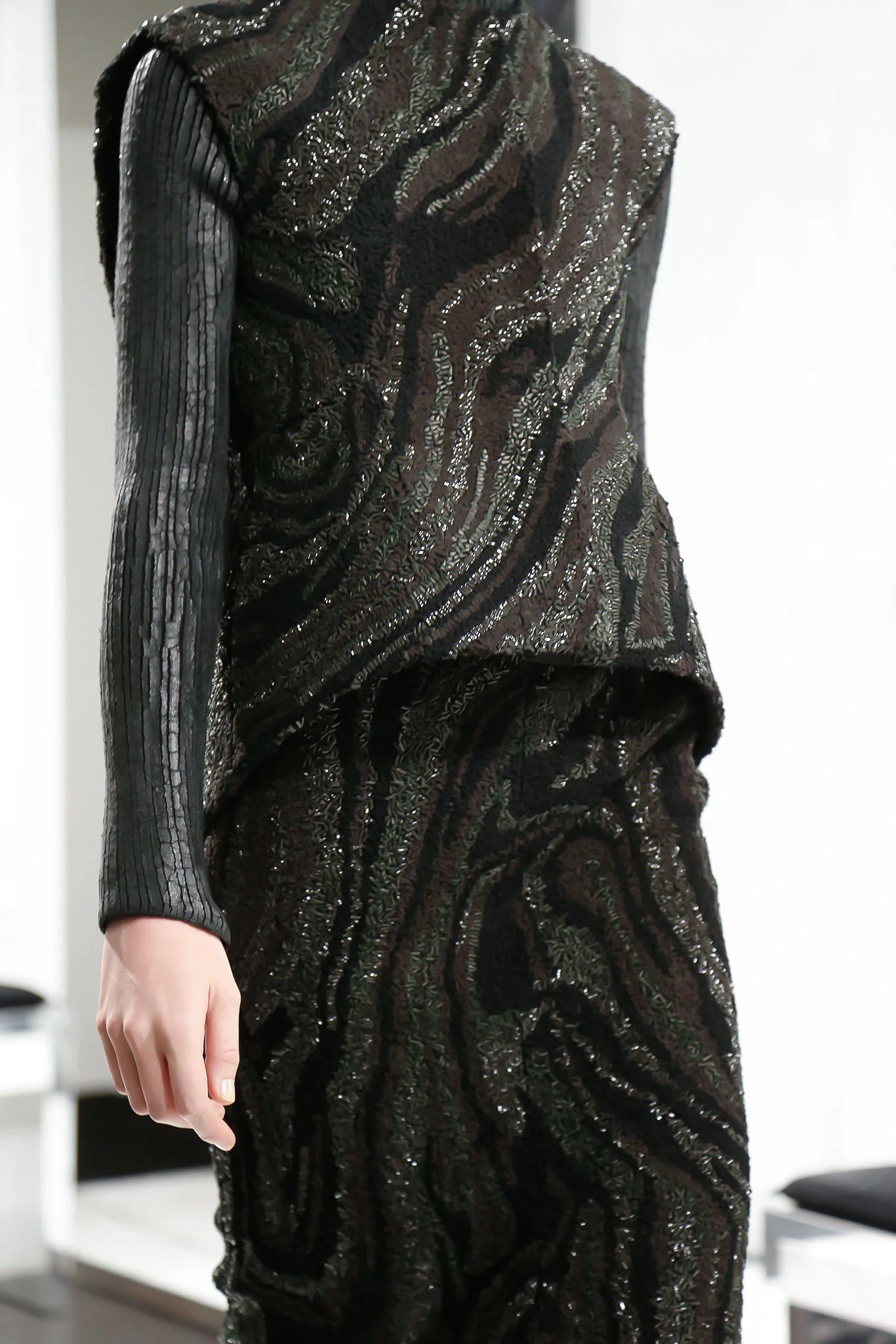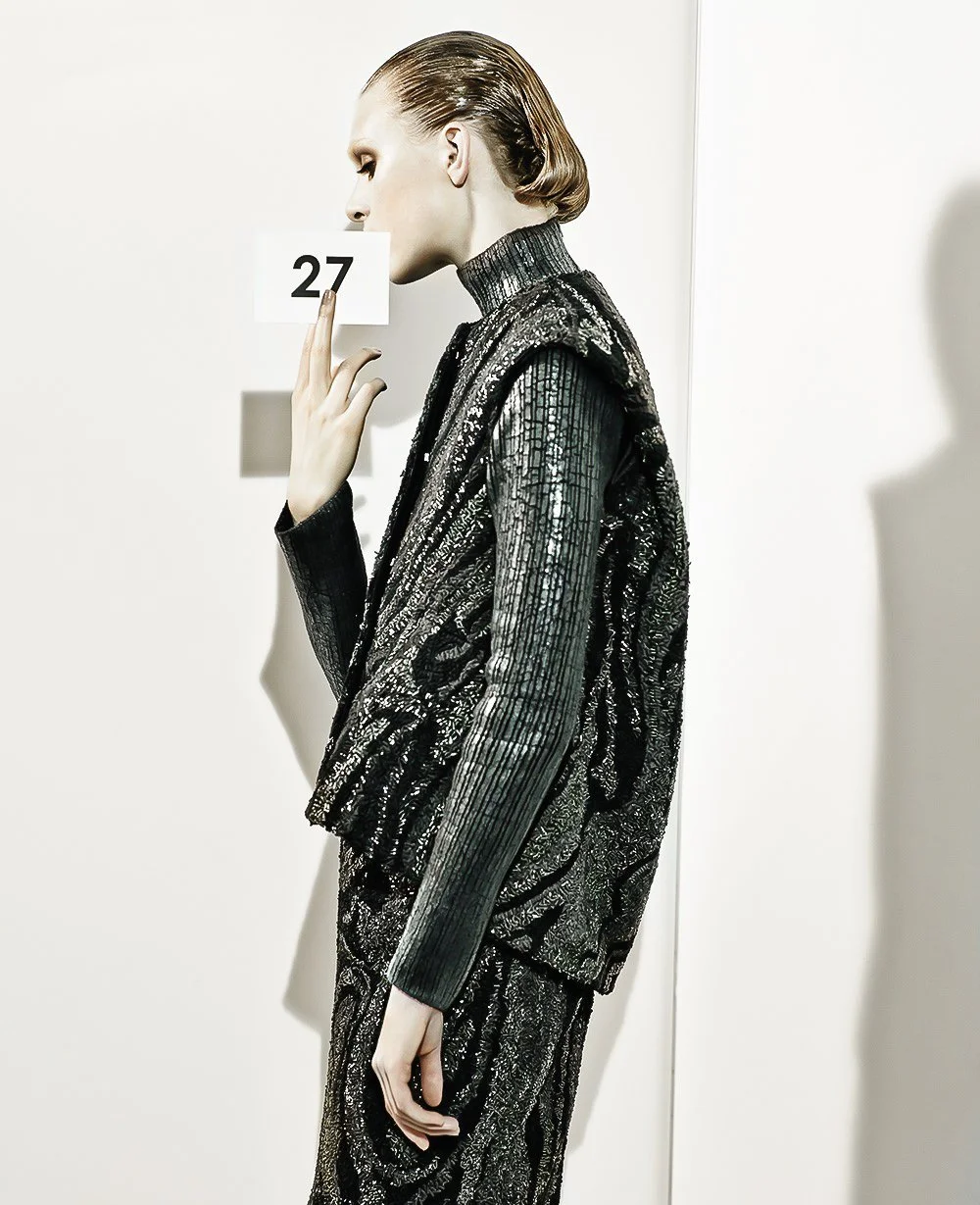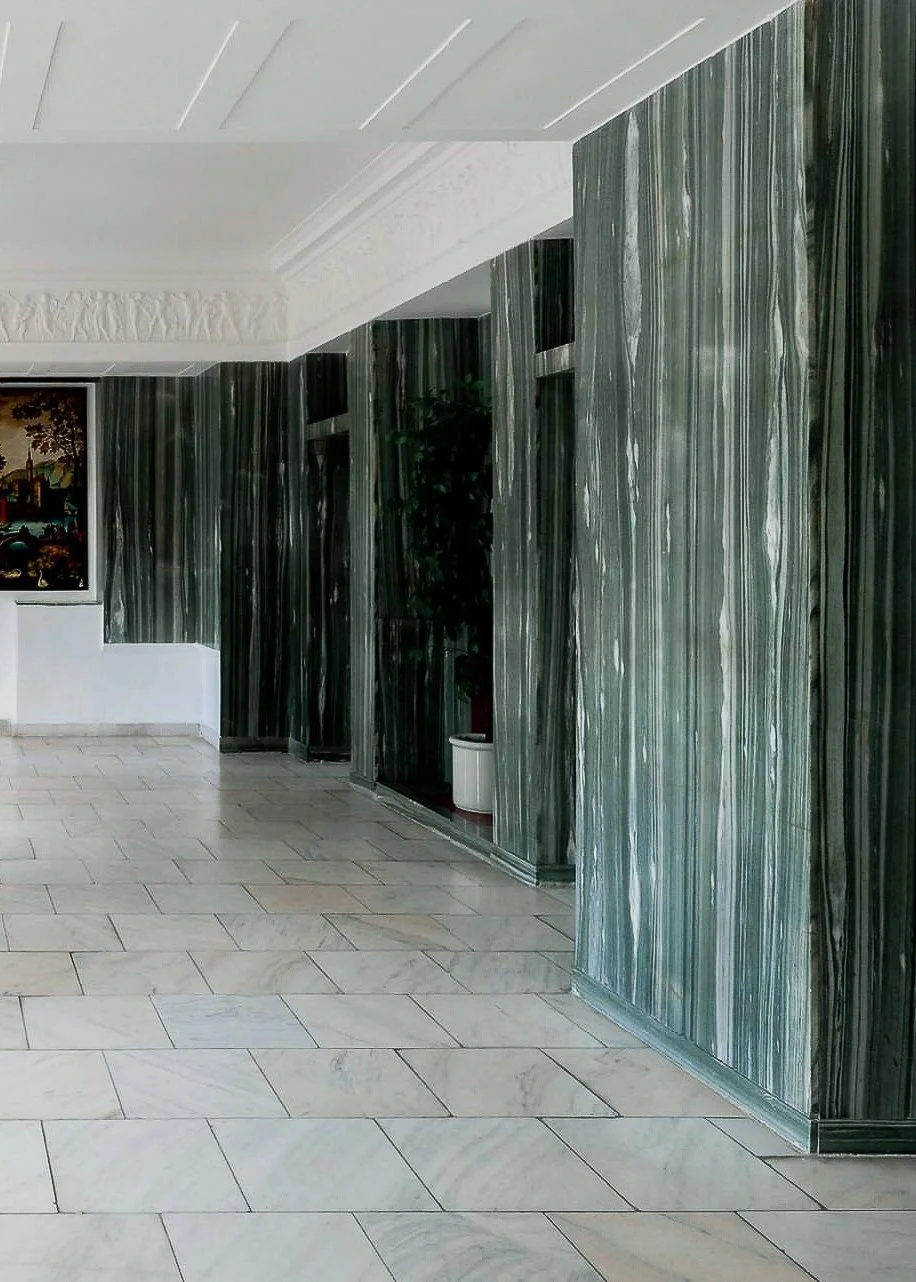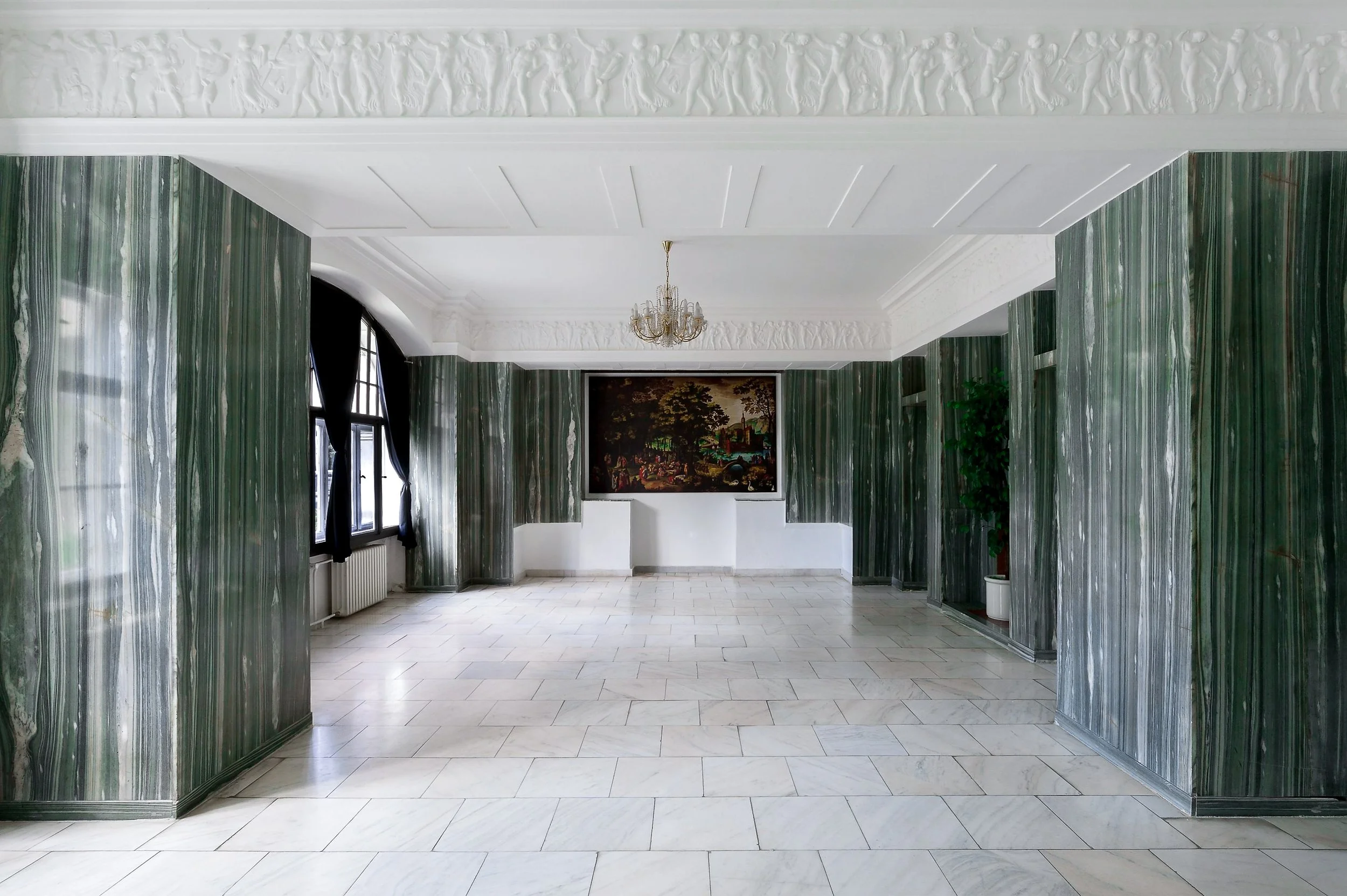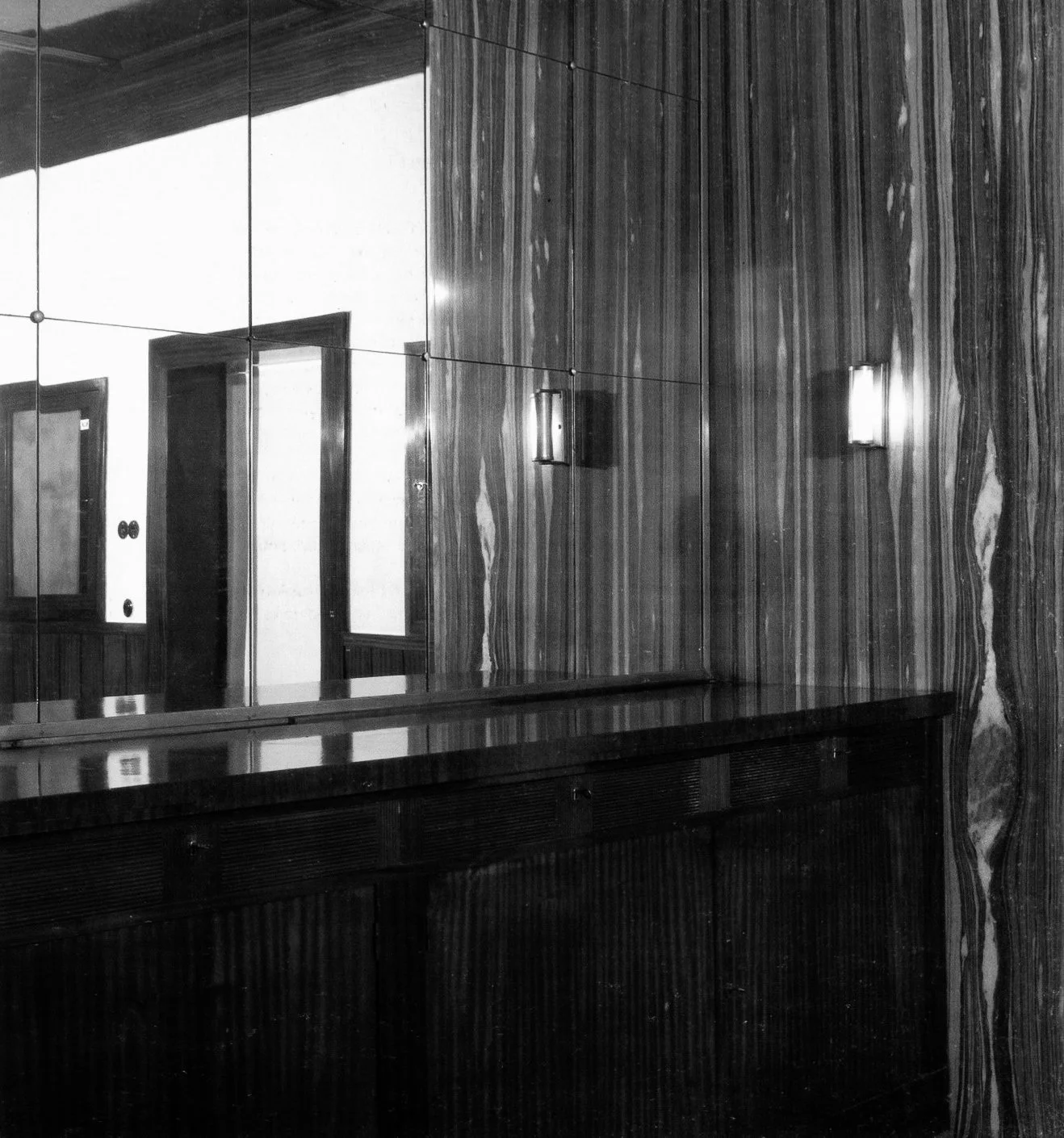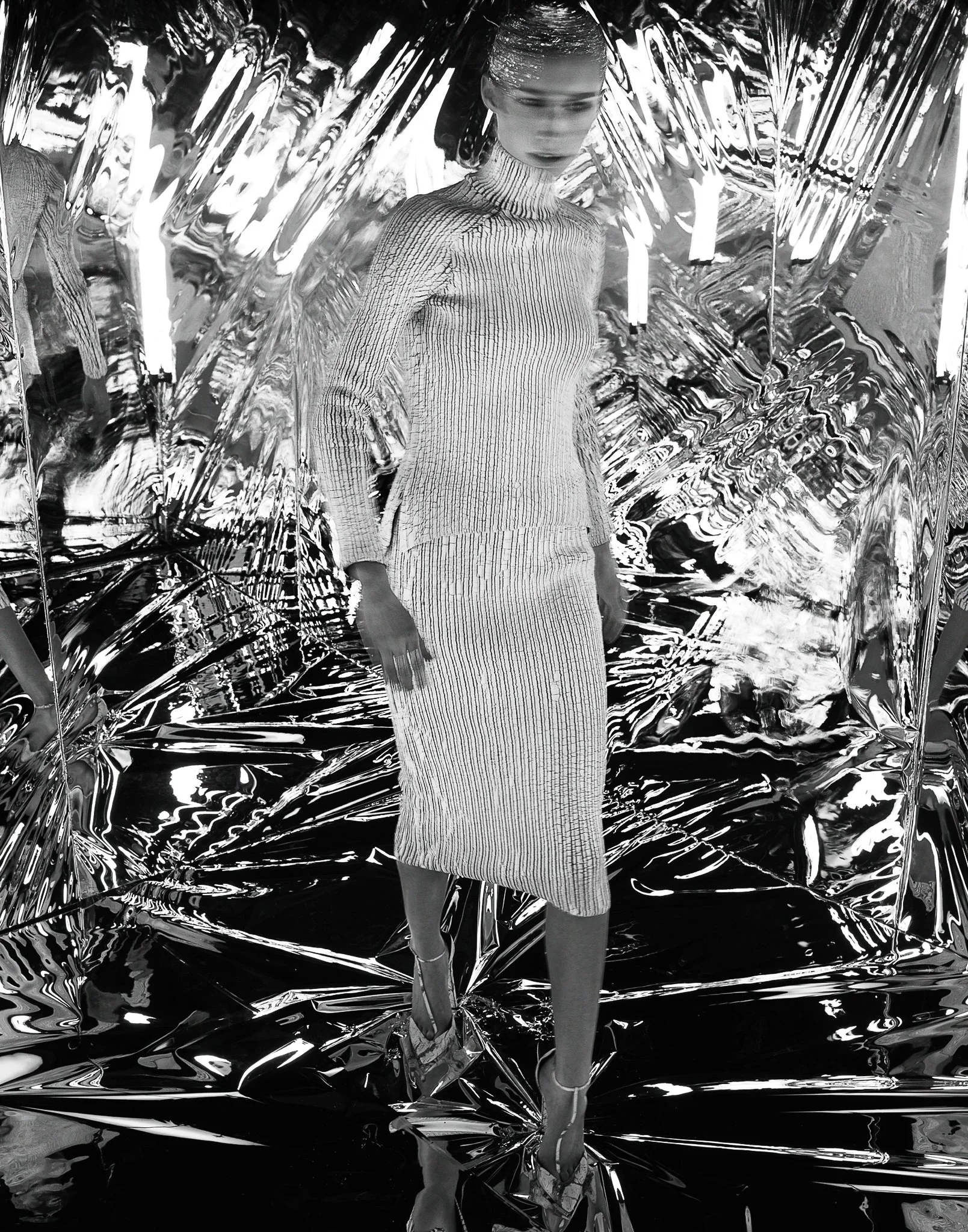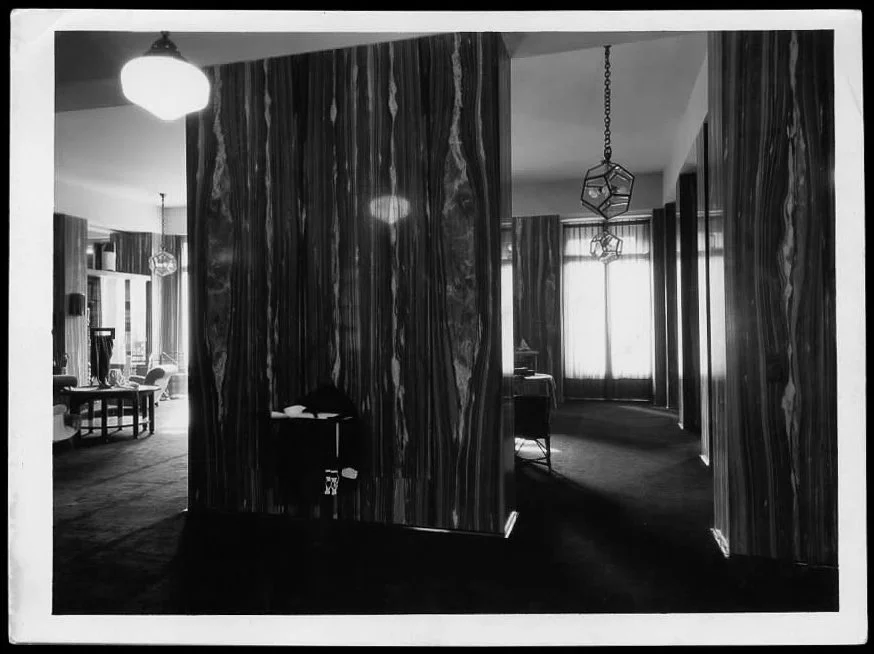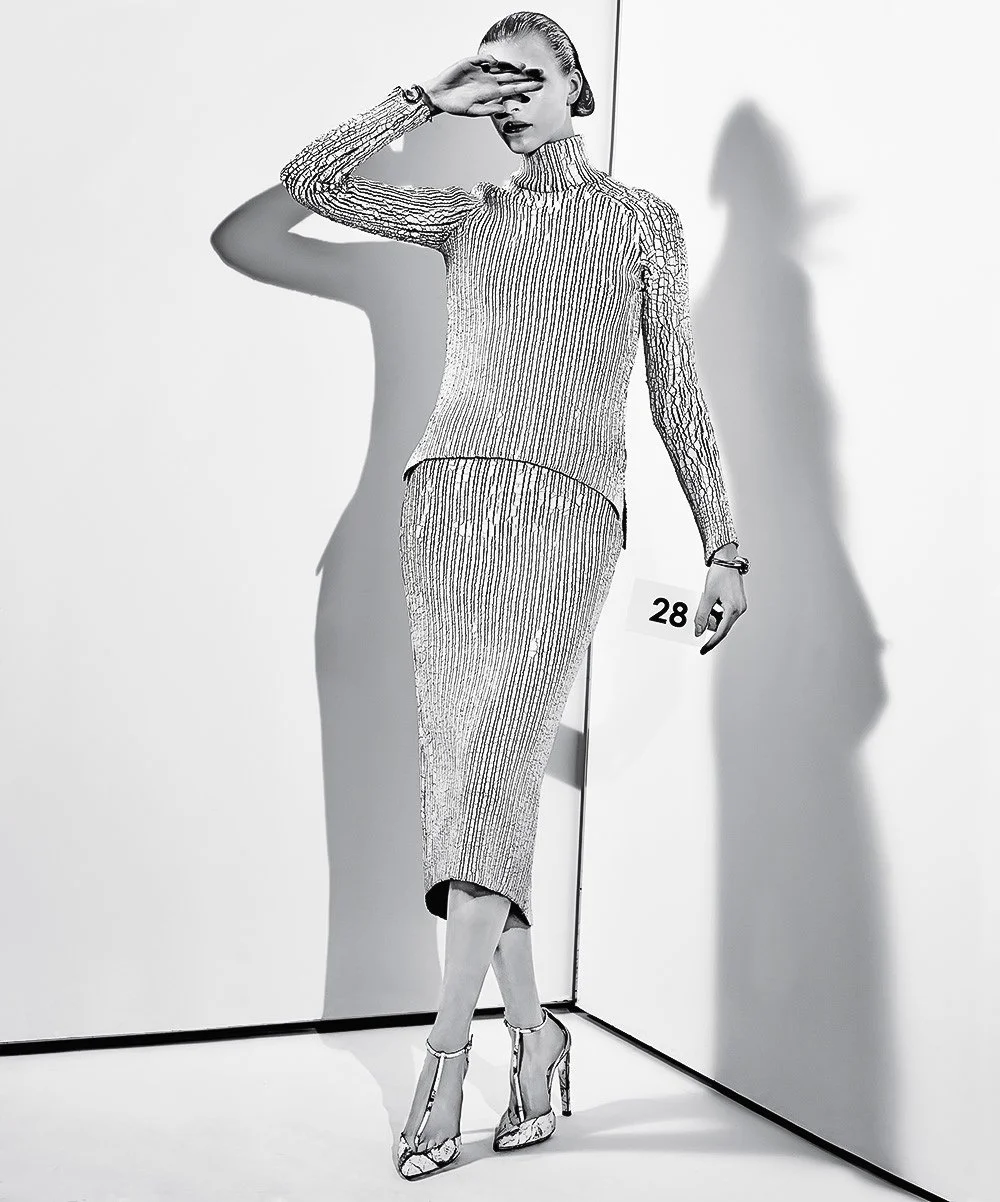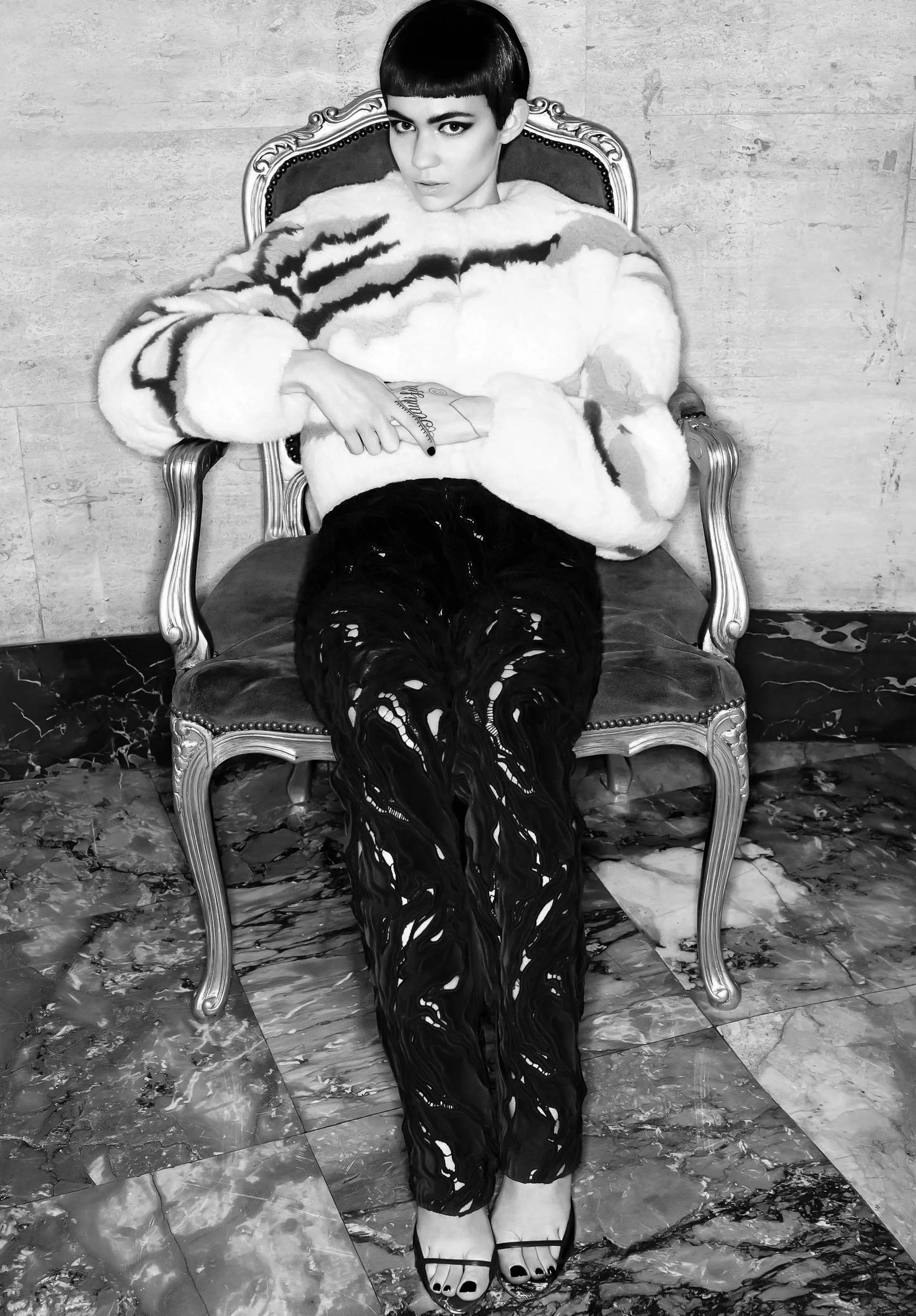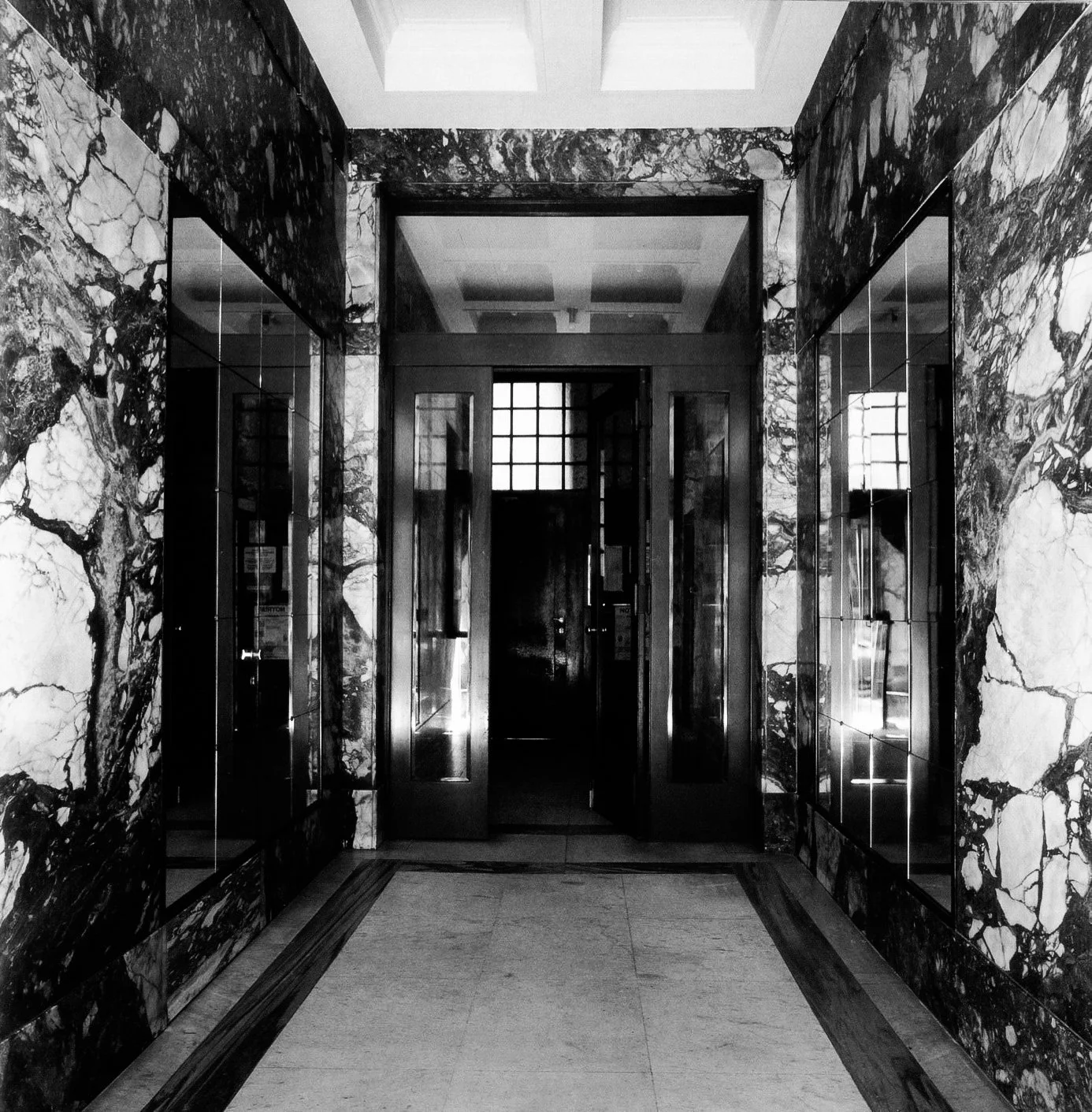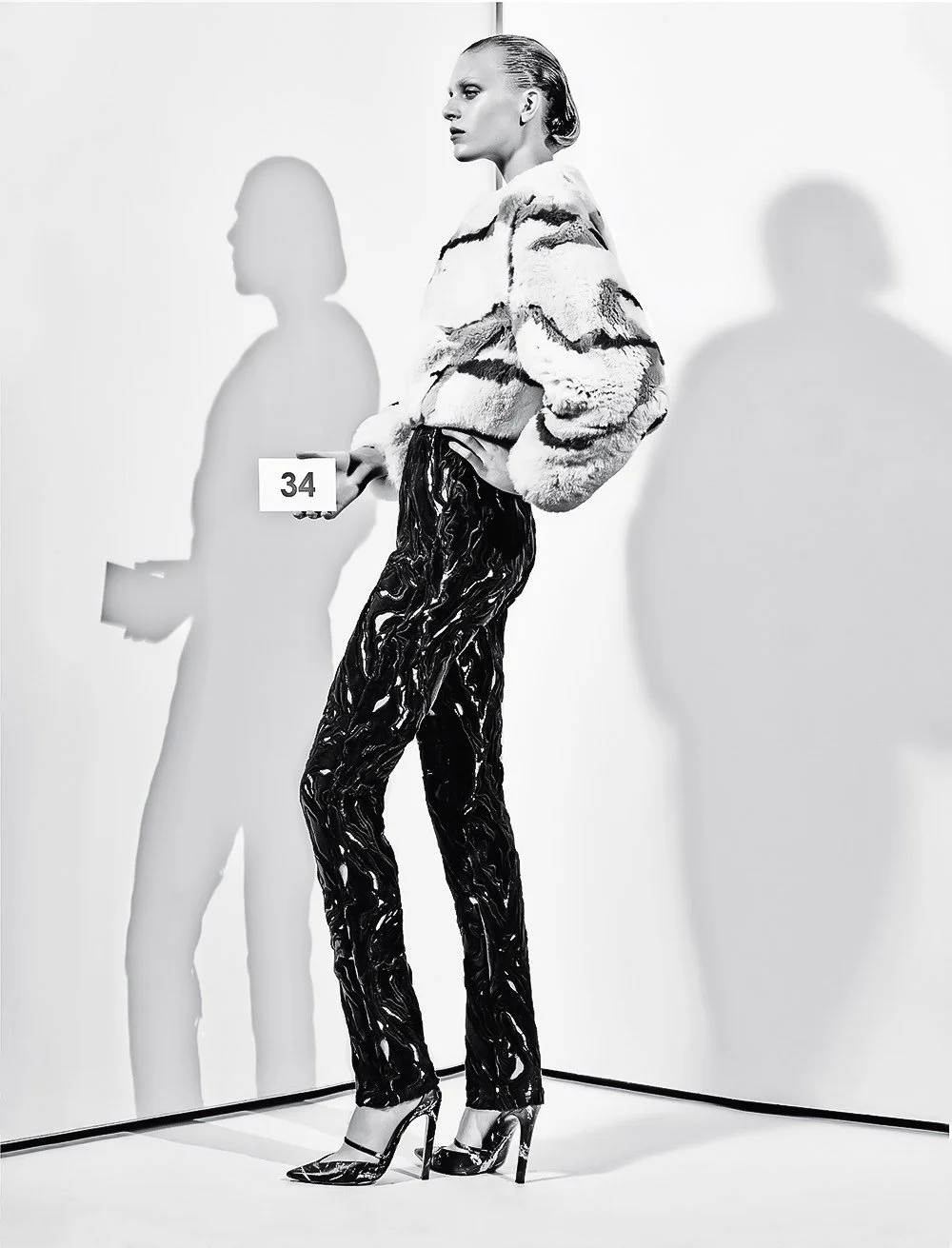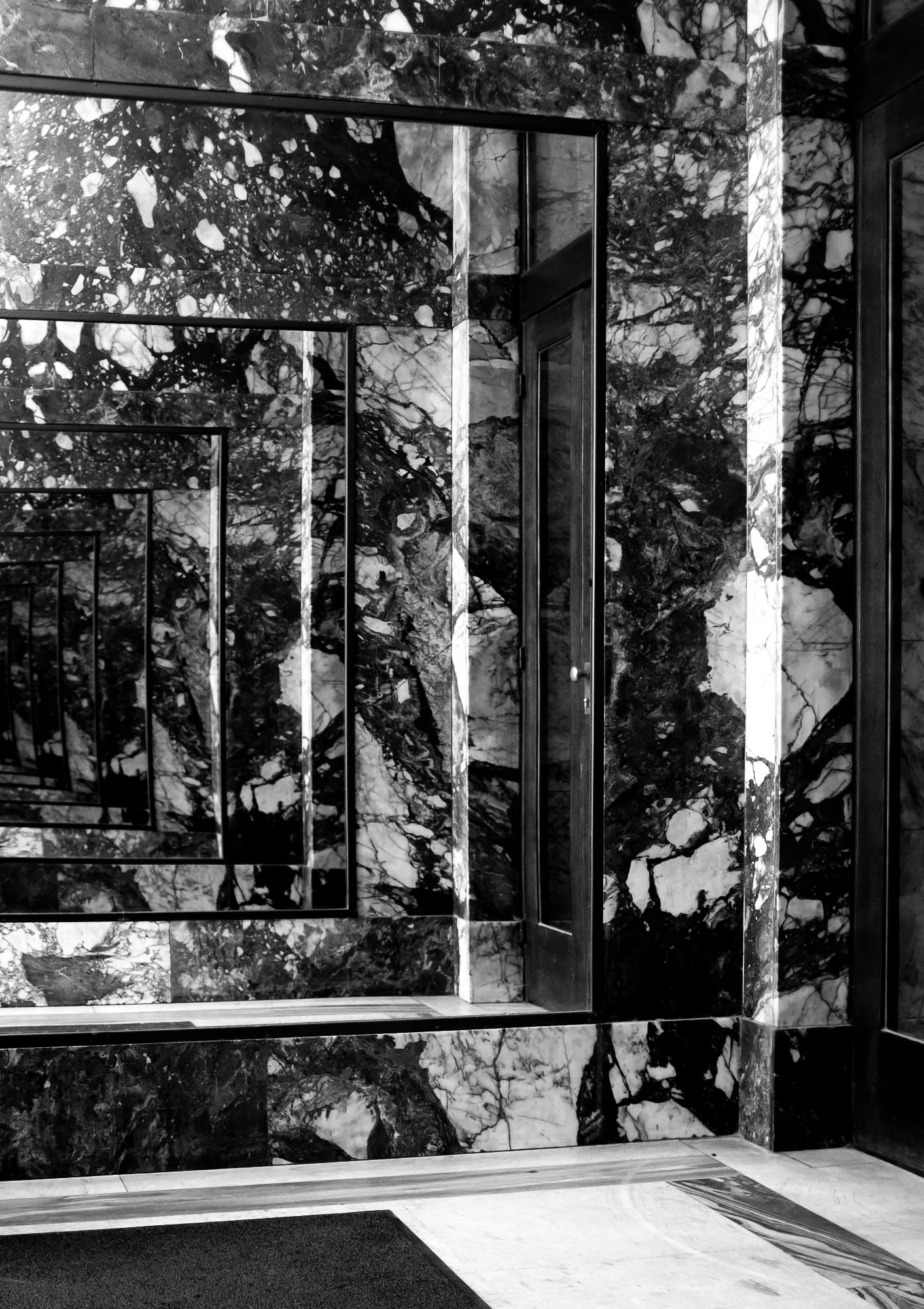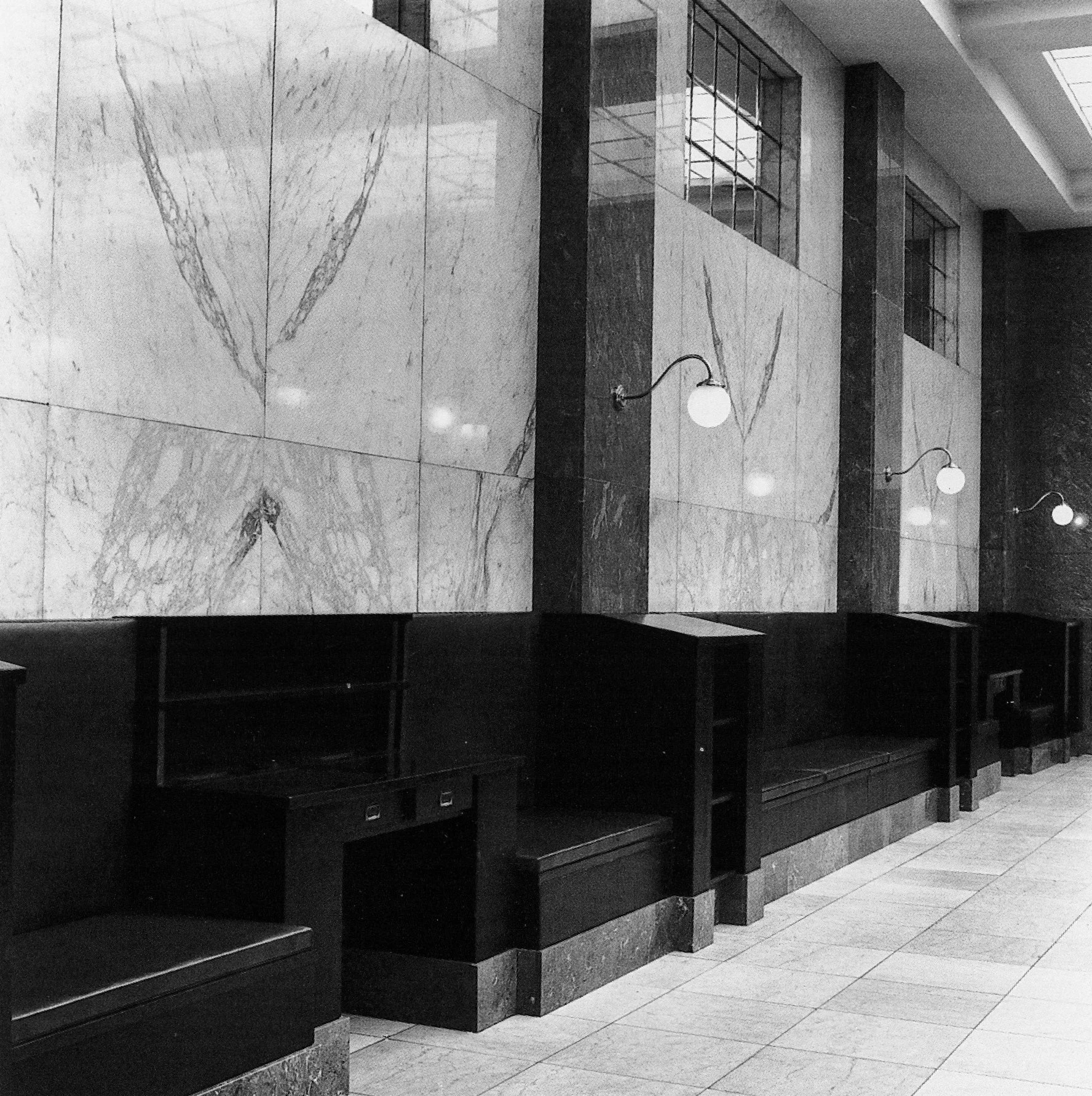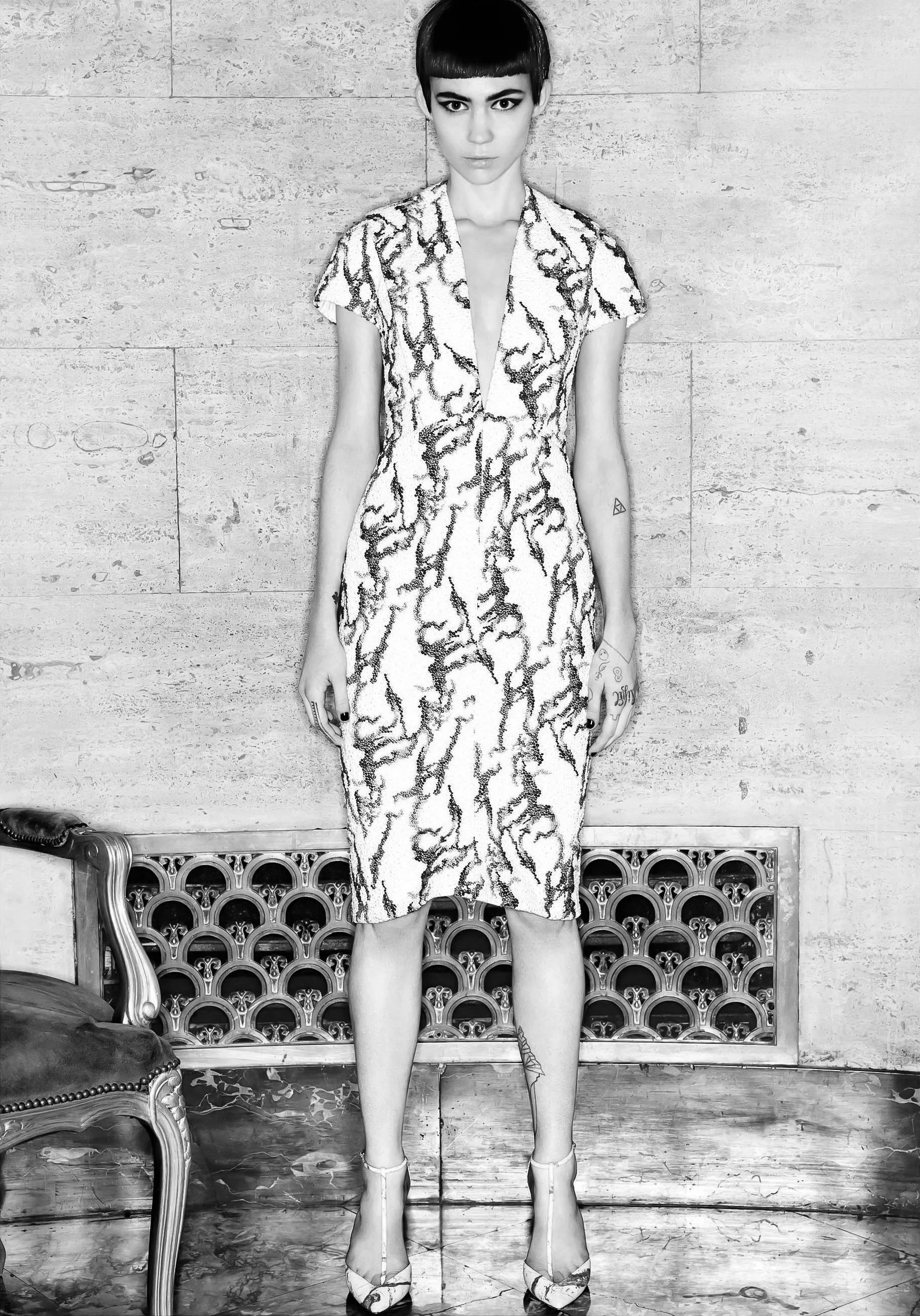ORNAMENT & CRIME
How Alexander Wang’s use of marble as inspiration for his 2013 Balenciaga debut, mirrored the architectural masterpieces of early Viennese modernist Adolf Loos… The son of a stonemason, Loos was one of the most influential European architects of the late 19th century and is often noted for his literary discourse that foreshadowed the foundations of the entire modernist movement. The architect’s essay Ornament and Crime advocated clean and smooth surfaces in contrast to the ornate decorations of the fin de siècle, as well as the more modernistic aesthetic principles of the Vienna Secession. Le Corbusier himself considered Loos’ Ornament and Crime "an Homeric cleansing" of architecture, revealing the magnitude of his impact on modernist ideology. Although noted for the lack of ornamentation on their exteriors, the interiors of many of Loos' buildings were finished with rich and expensive materials, notably stone, marble and wood, highlighting natural patterns and textures in flat planes, executed in first rate craftsmanship. Similarly, legendary couturier Cristóbal Balenciaga, also celebrated for his modern approach to design, developed intricate construction within his garments, while simultaneously letting the sculptural lines of his fabrics speak for themself… And so, in the spirit of the house’s namesake neoteric master, Wang’s focus on the elegance of rich materials showcased in linear forms, perhaps unintentionally, yet very appropriately, recalled the noted principles of Loos’ architectural aesthetics.
Detail of the black marble wrapped around the first floor veranda • Villa Karma • Circa 1904 - 1906 • Montreux, Switzerland • Adolf Loos • Image courtesy of Adolf Loos : Architecture 1903 - 1932 by Roberto Schezen
“Wang's runway was faux marble, and it became one of the show's ongoing tropes—a paean, apparently, to the sculptural quality of Cristóbal Balenciaga's clothes, not to mention the monolithic legacy. A marble print first showed up as the lining of elegant tops that spilled open at the back, then as a motif on a bullion-embroidered dress and tailleurs as elaborately embellished as couture, and finally on tiny shaved fox jackets worn with high-waisted velvet lace pants. Shoes with deep toe cleavage and skinny T-straps also reproduced the pattern…” • Nicole Phelps for Vogue
Emma Pei modeling Alexander Wang’s marble inspired ensemble for Balenciaga • Autumn / Winter 2013 Collection • Vogue China • Yiin Chao
Detail of Hugo Semler’s apartment featuring Fantastico marble and elm wood • Reconstructed Circa 1930 • Pilsen, Czechia • Adolf Loos
Lily Donaldson modeling Alexander Wang’s marble inspired ensemble for Balenciaga • Autumn / Winter 2013 Collection • Numéro • Billy Kidd
Detail of the first floor black marble bathroom • Villa Karma • Circa 1904 - 1906 • Montreux, Switzerland • Adolf Loos • Image courtesy of Adolf Loos : Architecture 1903 - 1932 by Roberto Schezen
Kristen McMenamy starring in the Balenciaga Ad Campaign • Autumn / Winter 2013 Collection • Steven Klein
Elisabeth Erm modeling Alexander Wang’s marble inspired ensemble for Balenciaga • Autumn / Winter 2013 Collection • Interview Germany • Greg Harris
Detail of the exterior of the American Bar otherwise known as Loos Bar • Circa 1907 • Vienna, Austria • Adolf Loos
Stephanie Hall modeling Alexander Wang’s marble inspired ensemble for Balenciaga • Autumn / Winter 2013 Collection • Harper's Bazaar China • Dan Smith
Detail of Hugo Semler’s apartment featuring Fantastico marble and elm wood • Reconstructed Circa 1930 • Pilsen, Czechia • Adolf Loos
Kristen McMenamy starring in the Balenciaga Ad Campaign • Autumn / Winter 2013 Collection • Steven Klein
Detail of Hugo Semler’s apartment featuring Fantastico marble and elm wood • Reconstructed Circa 1930 • Pilsen, Czechia • Adolf Loos
Sam Rollins modeling Alexander Wang’s marble inspired ensemble for Balenciaga • Autumn / Winter 2013 Collection • Vogue Italia • Craig McDean
Detail of Hugo Semler’s apartment featuring Fantastico marble and elm wood • Reconstructed Circa 1930 • Pilsen, Czechia • Adolf Loos
Detail of marble used in one of Loos’s interiors • Image courtesy of Adolf Loos : Architecture 1903 - 1932 by Roberto Schezen
Detail of the living room wrapped in green Cipollino marble • Villa Müller • Circa 1930 • Střešovická, Prague • Adolf Loos
Detail of the living room wrapped in green Cipollino marble • Villa Müller • Circa 1930 • Střešovická, Prague • Adolf Loos • Image courtesy of Adolf Loos : Architecture 1903 - 1932 by Roberto Schezen
View of the Cipollino marble clad entry hall • Knize Men's Clothing Shop • Image Circa 1927 - 1928 • Paris, France • Adolf Loos • Image courtesy of Thérèse Bonney via the Smithsonian Libraries and Archives, Washington D.C.
Detail of the living room wrapped in green Cipollino marble • Villa Müller • Circa 1930 • Střešovická, Prague • Adolf Loos • Image courtesy of Adolf Loos : Architecture 1903 - 1932 by Roberto Schezen
Detail of the Cipollino marble from Euboea • The Goldman & Salatsch Michaelerplatz Building otherwise know as Looshaus • Circa 1910 • Vienna, Austria • Adolf Loos
Detail of the mezzanine facade featuring Cipollino marble from Euboea • The Goldman & Salatsch Michaelerplatz Building otherwise know as Looshaus • Circa 1910 • Vienna, Austria • Adolf Loos • Image courtesy of Adolf Loos : Architecture 1903 - 1932 by Roberto Schezen
Detail of the mezzanine facade featuring Cipollino marble from Euboea • The Goldman & Salatsch Michaelerplatz Building otherwise know as Looshaus • Circa 1910 • Vienna, Austria • Adolf Loos • Image courtesy of Adolf Loos : Architecture 1903 - 1932 by Roberto Schezen
Hedvig Palm modeling Alexander Wang’s marble inspired ensemble for Balenciaga • Autumn / Winter 2013 Collection • Dazed & Confused • Kacper Kasprzyk
Detail of Vilém Kraus’s apartment featuring green and white veined Cipollino marble • Reconstructed Circa 1930 • Pilsen, Czechia • Adolf Loos
Saskia de Brauw modeling Alexander Wang’s marble inspired ensemble for Balenciaga • Autumn / Winter 2013 Collection • Wallpaper • Paolo Roversi
Detail of Vilém Kraus’s apartment featuring green and white veined Cipollino marble • Reconstructed Circa 1930 • Pilsen, Czechia • Adolf Loos
Anais Pouliot modeling Alexander Wang’s marble inspired ensemble for Balenciaga • Autumn / Winter 2013 Collection • M Le Magazine du Monde • Max Farago
Detail of Vilém Kraus’s apartment featuring green and white veined Cipollino marble • Reconstructed Circa 1930 • Pilsen, Czechia • Adolf Loos
Signage etched in marble at the Zentralsparkasse Bank, originally called the Anglo-Österreichische Bank • Restoration Circa 1914 • Vienna, Austria • Adolf Loos • Image courtesy of Adolf Loos : Architecture 1903 - 1932 by Roberto Schezen
Detail of Vilém Kraus’s qpartment featuring Cipollino marble and mahogany wood • Reconstructed Circa 1930 • Pilsen, Czechia • Adolf Loos • Image courtesy of Adolf Loos : Architecture 1903 - 1932 by Roberto Schezen
Anais Pouliot modeling Alexander Wang’s marble inspired ensemble for Balenciaga • Autumn / Winter 2013 Collection • M Le Magazine du Monde • Max Farago
View of the marble clad main salon • Knize Men's Clothing Shop • Image Circa 1920’s • Paris, France • Adolf Loos
Joséphine Le Tutour modeling Alexander Wang’s marble inspired ensemble for Balenciaga • Autumn / Winter 2013 Collection • Interview Germany • Greg Harris
View from the entrance into the Cipollino marble clad main salon • Knize Men's Clothing Shop • Image Circa 1927 - 1928 • Paris, France • Adolf Loos • Image courtesy of Thérèse Bonney via the Smithsonian Libraries and Archives, Washington D.C.
Hedvig Palm modeling Alexander Wang’s marble inspired ensemble for Balenciaga • Autumn / Winter 2013 Collection • Dazed & Confused • Kacper Kasprzyk
Detail of the living room wrapped in Cipollino marble • Villa Müller • Circa 1930 • Střešovická, Prague • Adolf Loos • Image courtesy of Adolf Loos : Architecture 1903 - 1932 by Roberto Schezen
Grimes modeling Alexander Wang’s marble inspired ensemble for Balenciaga • Autumn / Winter 2013 Collection • July 1, 2013 • Vogue • Mikael Jansson
Detail of the marble clad residential entrance to The Goldman & Salatsch Michaelerplatz Building otherwise know as Looshaus • Circa 1910 • Vienna, Austria • Adolf Loos • Image courtesy of Adolf Loos : Architecture 1903 - 1932 by Roberto Schezen
Hedvig Palm modeling Alexander Wang’s marble inspired ensemble for Balenciaga • Autumn / Winter 2013 Collection • Dazed & Confused • Kacper Kasprzyk
Detail of the marble clad residential entrance to The Goldman & Salatsch Michaelerplatz Building otherwise know as Looshaus • Circa 1910 • Vienna, Austria • Image courtesy of Martin Feiersinger
Ruby Aldridge modeling Alexander Wang’s marble inspired ensemble for Balenciaga • Autumn / Winter 2013 Collection • Vogue Mexico • Thomas Cooksey
Detail of the marble ceiling at the American Bar otherwise known as Loos Bar • Circa 1907 • Vienna, Austria • Adolf Loos • Image courtesy of Adolf Loos : Architecture 1903 - 1932 by Roberto Schezen
Kristen McMenamy starring in the Balenciaga Ad Campaign • Autumn / Winter 2013 Collection • Steven Klein
Detail of Hugo Semler’s apartment featuring Fantastico marble and elm wood • Reconstructed Circa 1930 • Pilsen, Czechia • Adolf Loos
The white marble and dark oak interior of the Zentralsparkasse Bank, originally called the Anglo-Österreichische Bank • Restoration Circa 1914 • Vienna, Austria • Adolf Loos • Image courtesy of Adolf Loos : Architecture 1903 - 1932 by Roberto Schezen
Grimes modeling Alexander Wang’s marble inspired dress and heels for Balenciaga • Autumn / Winter 2013 Collection • July 1, 2013 • Vogue • Mikael Jansson
Metal on marble signage for the original Kärntner Bar, otherwise known as the American Bar or Loos Bar • Circa 1907 • Vienna, Austria • Adolf Loos • Image courtesy of Adolf Loos : Architecture 1903 - 1932 by Roberto Schezen



